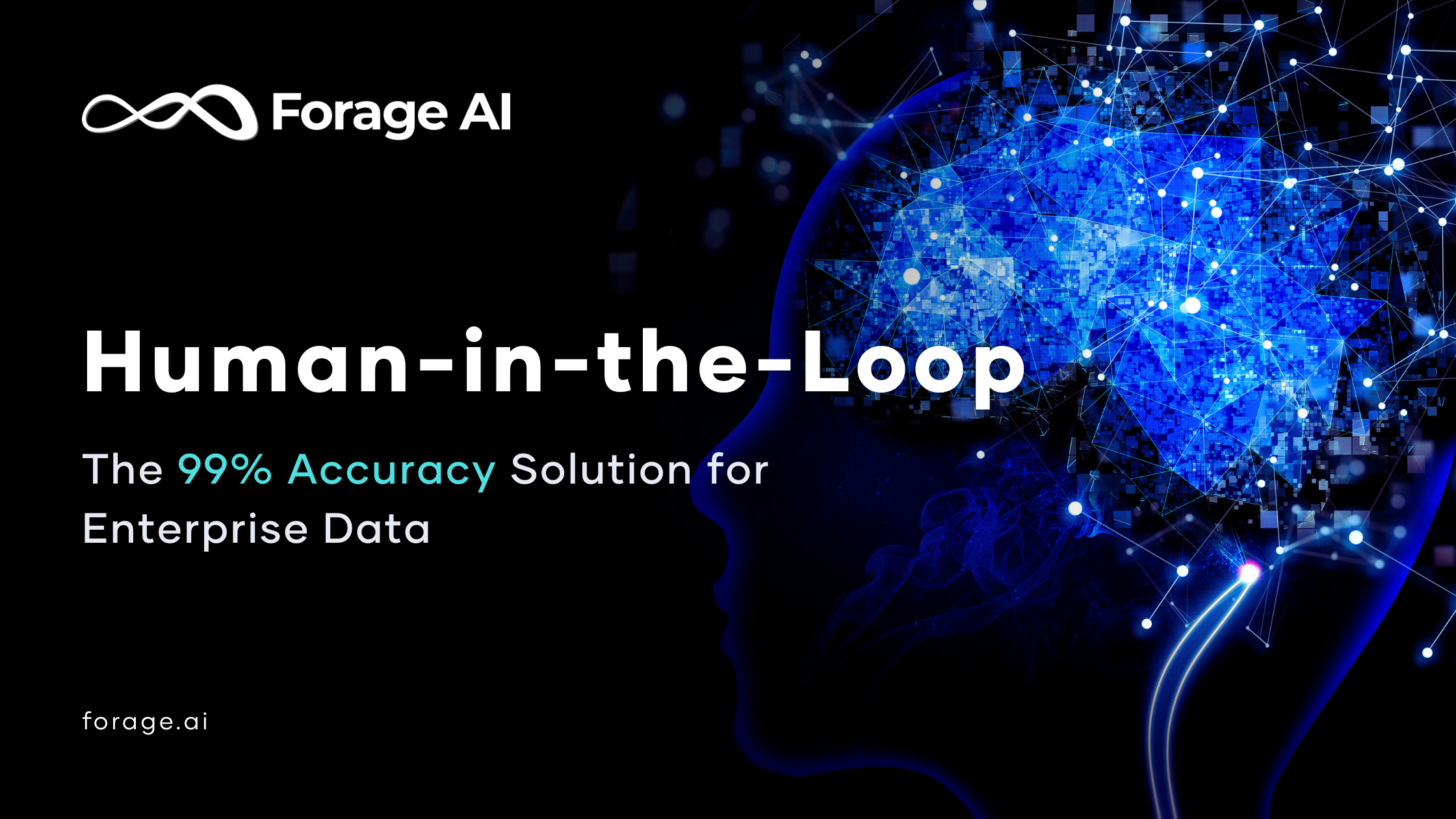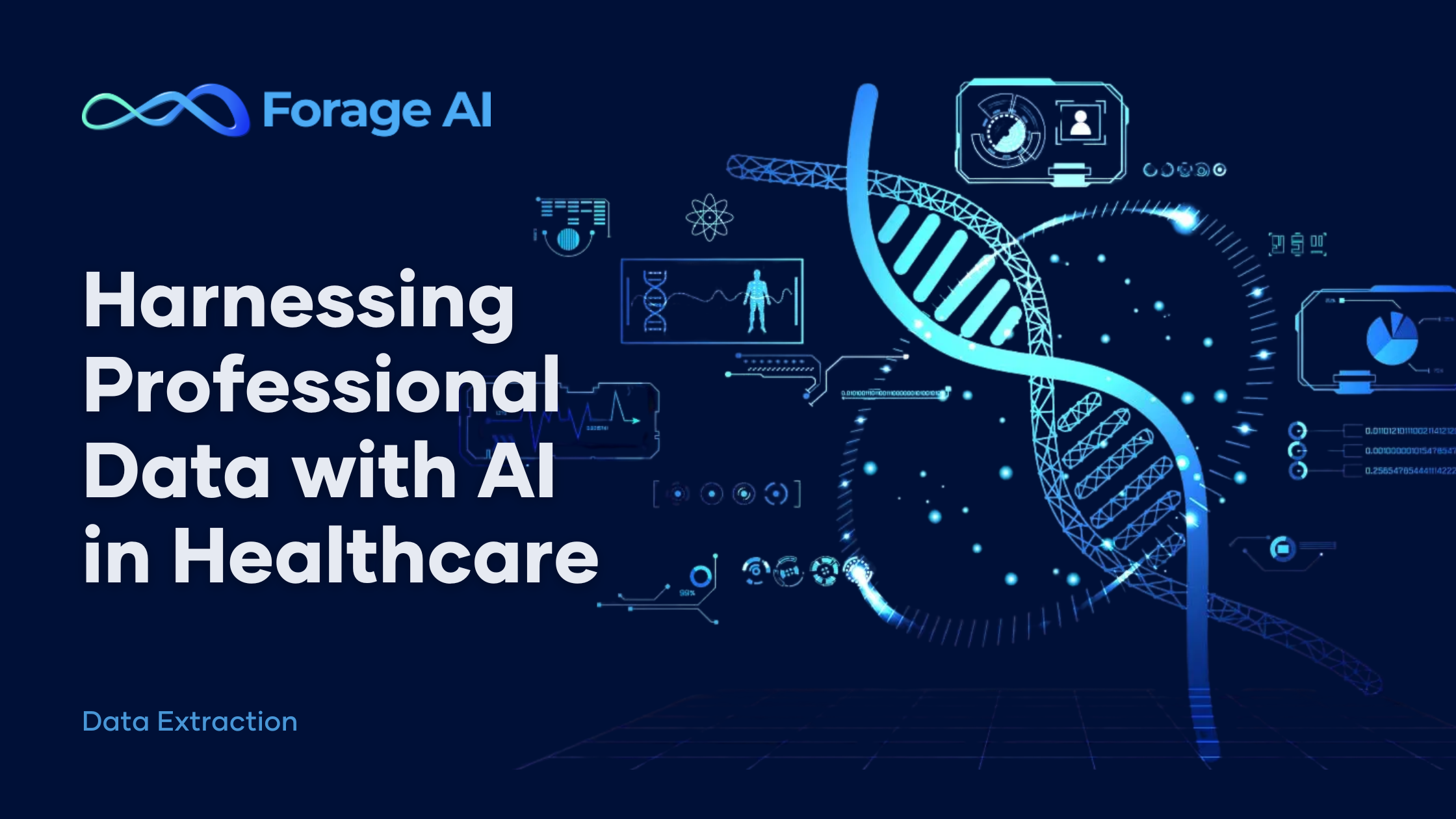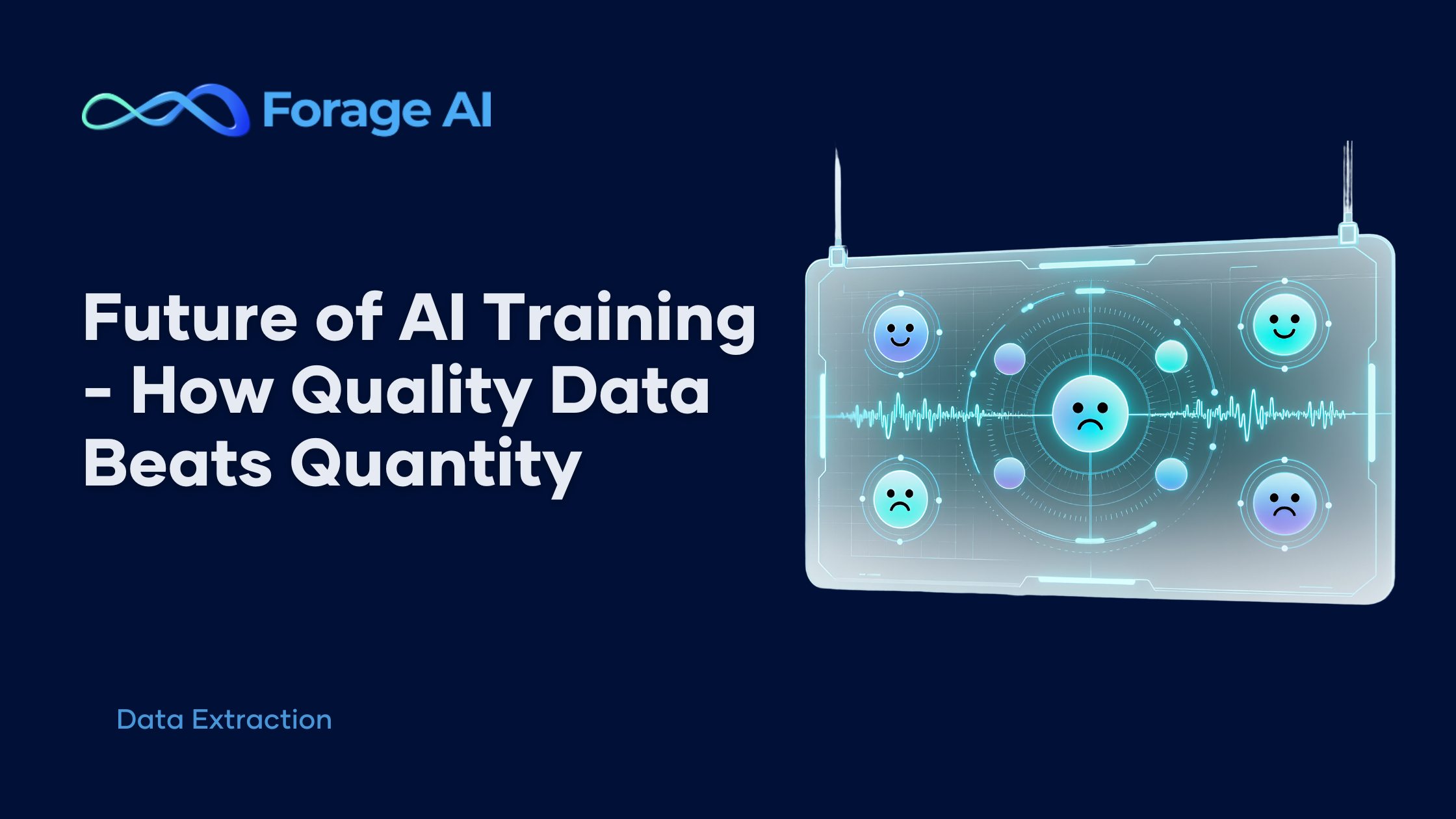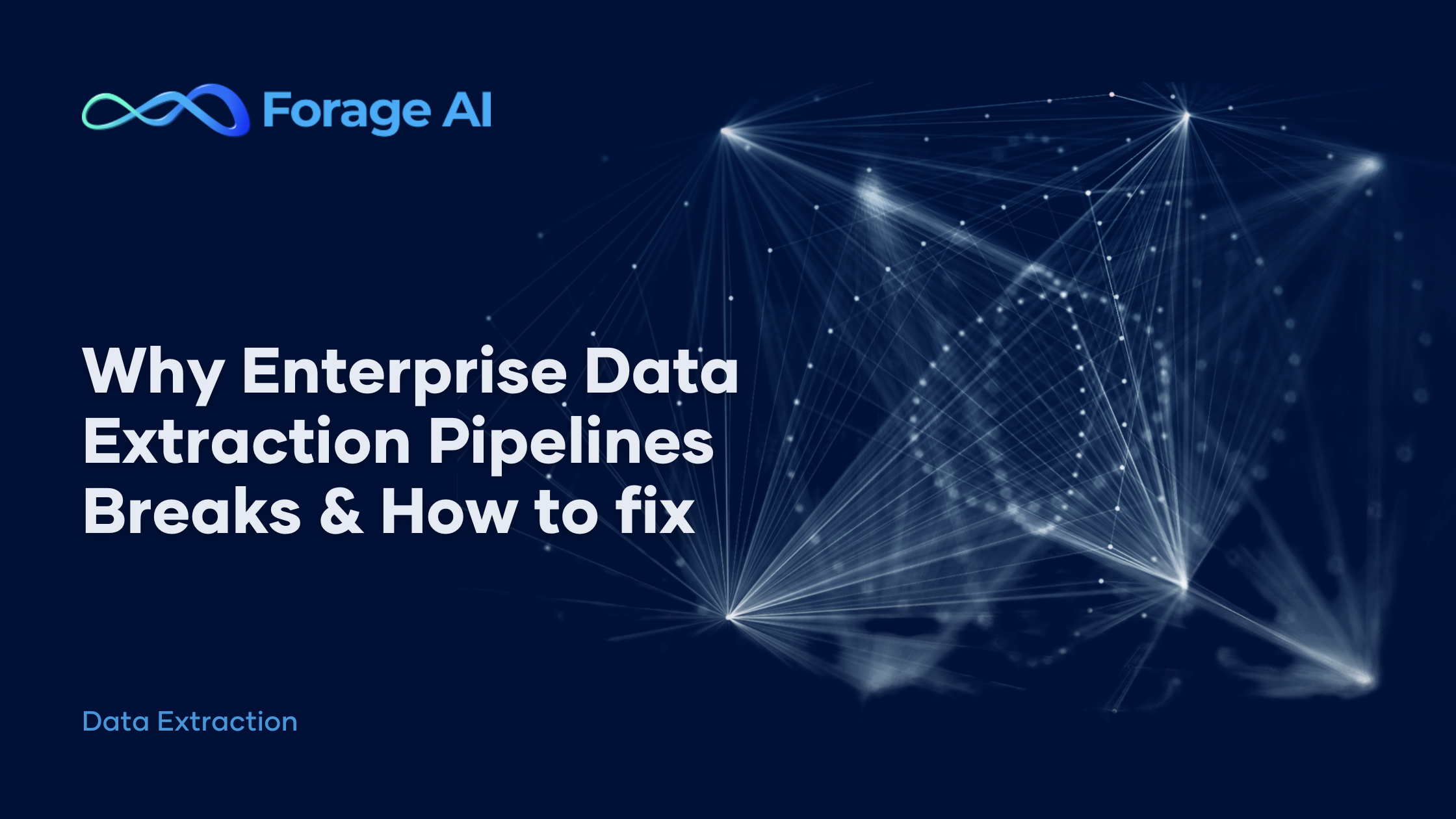Executive summary
Poor data quality costs the average Fortune 500 company $9.7 million annually. Data teams waste 60% of their time on data wrangling. Regulatory compliance failures trigger multi-million dollar fines. Pure automation plateaus at 94-95% accuracy, while your business demands at least 99%.
The solution exists: human-in-the-loop (HITL) data extraction combines AI’s processing power with strategic human expertise to achieve the accuracy levels enterprises require. Organizations implementing HITL report 348% ROI over three years, with payback in less than six months.
This guide reveals how companies use human-in-the-loop methodologies to transform their data operations from liability to competitive advantage, without the armies of manual reviewers you might expect.
When automation fails: The enterprise data quality crisis
Enterprise data leaders face an increasingly urgent crisis. Gartner reports that poor data quality costs organizations an average of $12.9 million annually. For Fortune 500 companies, this figure often exceeds $15 million when accounting for hidden costs: strategic missteps, compliance failures, and opportunity losses.
The crisis manifests in three critical failure modes:
- The AI readiness gap
MIT Sloan research reveals that 30% of generative AI projects are expected to fail by 2025 due to inadequate data foundations. Companies rushing to implement AI discover their data isn’t ready – inconsistent formats, missing values, and accuracy issues prevent successful deployment. Data scientists report spending up to 80% of their time preparing data rather than building models.
- The compliance catastrophe
GDPR fines exceeded €2 billion in 2024. Healthcare data breaches average over $10 million per incident, according to IBM’s Cost of a Data Breach Report. Financial services face increasing scrutiny, with regulators demanding human accountability in automated decision-making under regulations like GDPR Article 22.
- The operational burden
Enterprise data teams averaging 500 people spend 1,200 cumulative hours weekly on data quality issues. This represents nearly 30 full-time equivalents dedicated solely to fixing problems that shouldn’t exist. Meanwhile, critical business decisions wait on data validation, market opportunities expire, and competitive advantage erodes.
The trigger moment consistently occurs when organizations experience high-stakes failures: a critical AI hallucination affecting customer experience, a regulatory audit failure revealing systematic data issues, or the realization that digital transformation initiatives cannot proceed without better data quality.
What is Human-in-the-Loop data extraction?
Human-in-the-loop data extraction is a hybrid methodology that strategically combines artificial intelligence with targeted human expertise to achieve accuracy levels neither approach can accomplish independently.
Unlike traditional manual review or pure automation, HITL systems leverage human intelligence at critical decision points where context, nuance, and domain expertise deliver exponential value improvements.
Core components of enterprise HITL systems
- Intelligent automation layer
Advanced AI models handle high-volume processing, extracting data from millions of documents using OCR, NLP, and computer vision. These systems achieve 90-95% baseline accuracy on routine extraction tasks.
- Strategic human intervention points
Expert validators focus on high-impact areas: edge cases, anomalies, and critical data points where errors carry disproportionate consequences. Human review typically covers 1-3% of total volume while preventing 95% of downstream issues.
- Continuous learning loops
Every human decision feeds back into the system, improving both AI models and quality protocols. This creates compounding accuracy improvements; organizations report 2-3% accuracy gains annually through this feedback mechanism.
- Real-time quality orchestration
Sophisticated routing systems direct data to appropriate experts based on complexity, risk, and domain requirements. Financial documents route to specialists who understand SEC regulations; healthcare records to those familiar with medical coding.
The critical distinction: strategic vs. manual
Human-in-the-loop is not about scaling manual review. It’s about applying human intelligence where it matters most. Consider the difference:
| Traditional manual review: | Strategic Human-in-the-Loop: |
|---|---|
| – Reviews every data – Linear processing time – Inconsistent quality – High operational cost – Limited scalability | – Reviews 1-3% of critical data – Parallel processing architecture – Consistent expert validation – 50-60% lower cost than manual – Unlimited scalable |
Why pure AI automation hits a 95% accuracy ceiling
Understanding why automation alone fails helps explain why human-in-the-loop succeeds. Four fundamental challenges prevent pure AI from achieving enterprise-grade accuracy:
- Context collapse in complex documents
AI excels at pattern recognition but struggles with contextual interpretation. In financial documents, the term “provision” carries different meanings depending on context—loan loss provisions, legal provisions, or provisional estimates. A study by Stanford’s Human-Centered AI Institute found that even advanced language models misinterpret financial terminology 8-12% of the time when context shifts within documents.
Real-world impact: A major bank’s automated system consistently misclassified provisional tax estimates as loan loss provisions, distorting risk assessments by millions until human review caught the pattern.
- The regulatory interpretation challenge
Compliance requirements evolve faster than models can be retrained. When the SEC updates reporting requirements or HIPAA clarifies protected health information definitions, automated systems require complete retraining cycles spanning weeks or months. Human experts adapt immediately.
Consider GDPR’s “legitimate interest” clause—a concept requiring nuanced interpretation that varies by context, industry, and specific use case. Automated systems cannot navigate these gray areas without human guidance.
- Industry-specific language evolution
Business terminology evolves rapidly. “ESG compliance” becomes “sustainability reporting.” “Cloud-native” replaces “SaaS-enabled.” “Digital transformation” morphs into “AI transformation.” These linguistic shifts happen faster than quarterly model updates.
Financial services alone introduce approximately 200 new terms annually, according to the Financial Industry Business Ontology. Each requires context-aware interpretation that pure automation cannot provide without extensive retraining.
- The edge case exponential
The Pareto principle reverses in enterprise data: 20% of cases generate 80% of value, but the final 5% of edge cases create 50% of risk.
Unusual financial instruments, rare medical conditions, complex legal provisions—these outliers demand expertise beyond pattern matching.
Analysis of large enterprises’ data operations reveals that edge cases, while representing less than 5% of volume, account for:
- 47% of compliance violations
- 62% of strategic data errors
- 71% of high-value transaction mistakes
The Human-in-the-Loop advantage: How 99% accuracy works
Achieving 99% accuracy requires more than adding humans to the workflow. It demands sophisticated orchestration of AI and human intelligence, each amplifying the other’s strengths.
The multi-layer quality architecture
Layer 1: Baseline AI processing: Advanced models process documents at scale, achieving 90-95% accuracy through:
- Custom-trained OCR for industry-specific formats
- Natural language processing tuned to domain terminology
- Computer vision for tables, charts, and complex layouts
- Pattern recognition across document types
Layer 2: Intelligent anomaly detection: Sophisticated algorithms identify potential issues without human intervention:
- Statistical outliers flagged for review
- Confidence scoring on every extraction
- Pattern breaks from historical data
- Regulatory compliance checks
Layer 3: Strategic expert validation: Domain specialists review flagged items and samples:
- Focus on high-risk, high-value data points
- Validate edge cases and anomalies
- Confirm regulatory compliance
- Train models on complex patterns
Layer 4: Continuous improvement integration: Every validation creates learning opportunities:
- Model retraining on corrected errors
- Pattern library expansion
- Process optimization insights
- Quality threshold adjustments
The power of selective intelligence
The key insight: humans don’t review everything; they review what matters. Through intelligent routing, expert validators focus on:
Critical data points (40% of human review)
- Financial figures above materiality thresholds
- Patient safety information
- Legal obligations and deadlines
- Regulatory reporting elements
Anomalies and outliers (30% of human review)
- Statistical deviations from expected patterns
- New document types or formats
- Unusual data combinations
- First-time entities or relationships
Random sampling (20% of human review)
- Quality assurance across all data
- Model performance validation
- Bias detection and correction
- Process consistency checks
Edge cases (10% of human review)
- Complex multi-party agreements
- Handwritten modifications
- Non-standard formats
- Ambiguous interpretations
This selective approach means 1-3% human review achieves 99% overall accuracy—a seemingly impossible mathematics that works through intelligent focus.
Human-in-the-Loop vs pure automation: enterprise comparison
Understanding the practical differences helps enterprise leaders make informed decisions. This comparison reflects real-world enterprise implementations:
| Capability | Pure automation | Human-in-the-Loop | Business impact |
|---|---|---|---|
| Baseline accuracy | 90-95% | 99%+ | Difference between confidence and uncertainty |
| Edge case handling | Rule-based, often fails | Expert judgment prevails | Prevents high-impact errors |
| Regulatory compliance | Programmatic interpretation | Context-aware validation | Meets human accountability requirements |
| Adaptation speed | 4-8 week retraining cycles | Real-time adjustment | Immediate response to changes |
| Complex documents | Limited to trained patterns | Handles any complexity | No document type limitations |
| Implementation time | 2-3 months | 3-4 months | Slightly longer, significantly better |
| Operational cost | Lower initial, high error cost | 20-30% higher, 50% lower TCO | Superior lifetime value |
| Scalability | Linear with volume | Intelligent scaling | Costs don’t scale linearly with volume |
| Quality consistency | Degrades with complexity | Maintains across all types | Predictable outcomes |
| Audit trail | Algorithmic decisions only | Human accountability included | Regulatory compliance ready |
Processing volume considerations
Both approaches handle millions of documents daily, but efficiency differs:
Pure automation:
- Consistent processing speed
- No fatigue or variation
- Limited by computational resources
- Quality degrades with volume spikes
Human-in-the-Loop:
- AI handles volume, humans handle complexity
- Intelligent routing prevents bottlenecks
- Elastic scaling through expert pools
- Quality is maintained regardless of volume
Your next step
The path forward is clear. Enterprises losing $9.7 million annually to poor data quality have a proven solution. Human-in-the-loop data extraction delivers:
- 99% accuracy, where pure automation plateaus at 95%
- 348% ROI with payback in less than 6 months
- Regulatory compliance with human accountability
- Immediate adaptation to business changes
- Scalability to billions of websites and documents
The enterprises succeeding with AI aren’t those with the most data; they’re those with the most reliable data. In a landscape where 30% of AI initiatives fail due to data quality issues, the 99% accuracy achieved through human-in-the-loop methodology separates leaders from laggards.
Why Forage AI
At Forage AI, we’ve spent over 15 years perfecting human-in-the-loop methodology. Our battle-tested approach combines:
- Advanced AI models developed in-house
- Expert validators with deep domain expertise
- Proprietary quality assurance protocols
- Proven 99% accuracy achievement
We don’t just deliver data; we deliver confidence. Confidence that your data is accurate. Confidence that AI initiatives will succeed. Confidence that transforms data from liability to competitive advantage.
The question isn’t whether you need reliable, accurate data—it’s whether you can afford anything less. Ready to transform your data quality from cost center to competitive advantage? Schedule Expert Consultation





